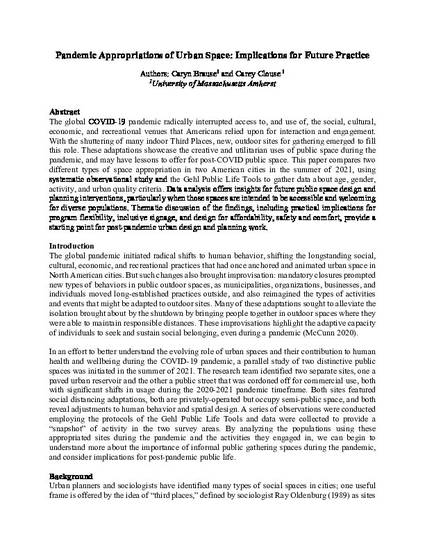
The global COVID-19 pandemic radically interrupted access to, and use of, the social, cultural, economic, and recreational venues that Americans relied upon for interaction and engagement. With the shuttering of many indoor Third Places, new, outdoor sites for gathering emerged to fill this role. These adaptations showcase the creative and utilitarian uses of public space during the pandemic, and may have lessons to offer for post-COVID public space. This paper compares two different types of space appropriation in two American cities in the summer of 2021, using systematic observational study and the Gehl Public Life Tools to gather data about age, gender, activity, and urban quality criteria. Data analysis offers insights for future public space design and planning interventions, particularly when those spaces are intended to be accessible and welcoming for diverse populations. Thematic discussion of the findings, including practical implications for program flexibility, inclusive signage, and design for affordability, safety and comfort, provide a starting point for post-pandemic urban design and planning work.
Available at: http://works.bepress.com/caryn_brause/28/
